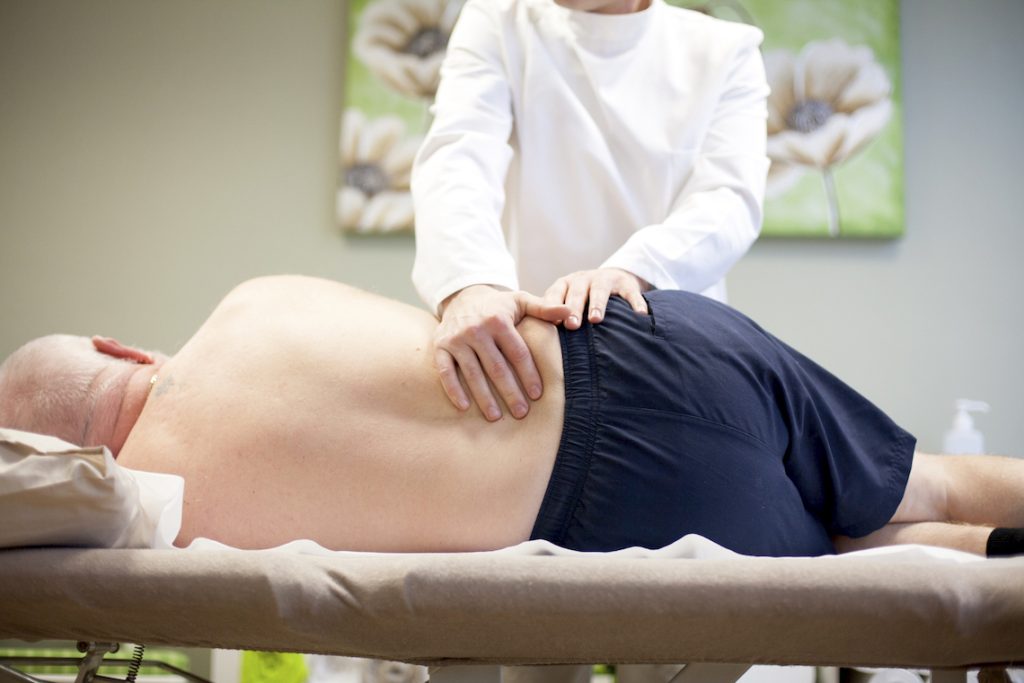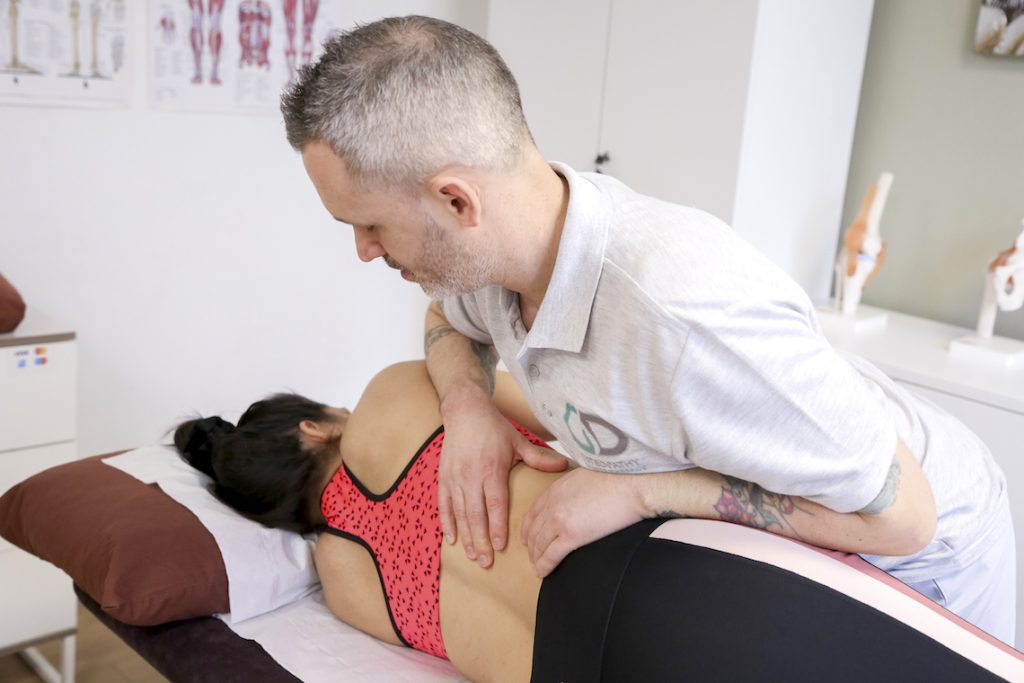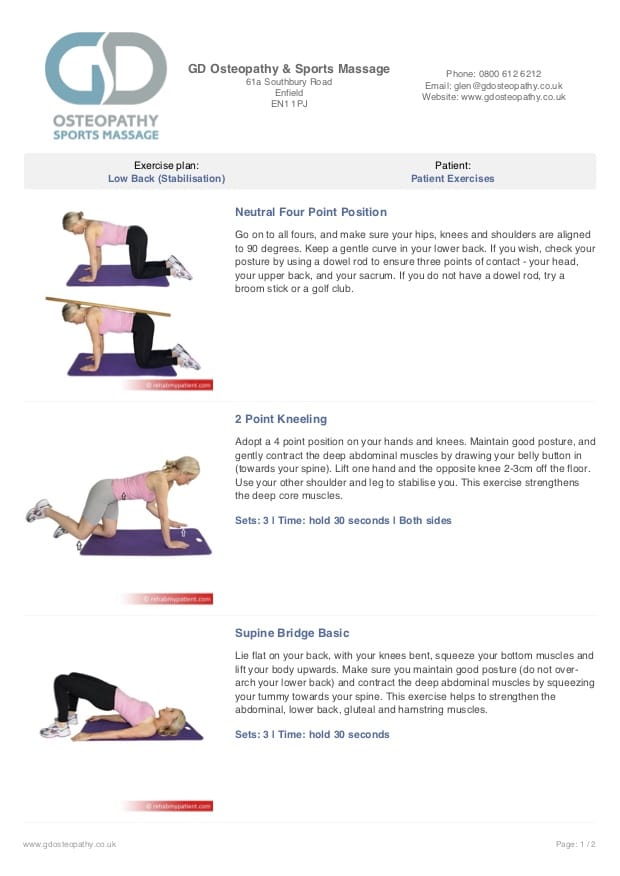Back pain is a prevalent issue, affecting up to 80% of people at some point in their lives. It’s one of the most common reasons people visit osteopaths, especially when dealing with lower back pain. Whether it’s from lifestyle habits or workplace conditions, the causes of back pain are often linked to repetitive activities or poor posture, such as:
- Long hours at a computer
- Extended periods of driving
- Frequent lifting, twisting, or bending
Most cases of lower back pain stem from strain to the joints, muscles, or ligaments in the back. The good news? Our expert Enfield osteopaths at GD Osteopathy & Sports Massage are here to guide you on the road to recovery. Osteopathy and sports massage are safe and effective, helping you get back to living pain-free.
Why Trust an Enfield Osteopath for Your Back Pain Treatment?

The human spine is a complex structure that requires expert attention for accurate diagnosis and effective treatment. When you visit a back pain specialist, they’ll perform thorough assessments to pinpoint the exact cause of your pain. This ensures that you receive the most appropriate treatment to get back on your feet.
Your spine consists of:
- 24 vertebrae that bear the weight of your body
- 23 intervertebral discs that act as shock absorbers
- Hundreds of ligaments that hold your bones together
- Numerous muscles and tendons that facilitate movement
- The spinal cord and 62 spinal nerves, which send signals between the brain and body
Back pain can develop suddenly due to an injury or gradually from repetitive strain over time. Sometimes, the cause of the pain may not be immediately apparent. However, a timely visit to an expert can help prevent chronic pain from developing, minimizing the impact on both your work and personal life.
Acute vs. Chronic Back Pain
Acute Back Pain
Acute back pain is typically short-term, lasting six weeks or less. It often occurs due to a sudden injury or overuse and can be triggered by improper lifting, bad posture, or a fall. In the UK, it’s a leading cause of sickness absence.
Common causes of acute back pain include:
- Excessive mechanical stress
- Postural fatigue
- Repetitive strain
- Trauma or injury
In some cases, acute pain can signal more serious underlying conditions, such as metabolic diseases or inflammatory disorders. This makes early diagnosis by an Enfield osteopath or other healthcare professional crucial to ensure appropriate treatment.

Chronic Back Pain
Chronic back pain is defined as pain that persists for three months or longer. It can arise from conditions like injury, degeneration, or repetitive stress. The pain may vary from dull and aching to sharp and stabbing, and it can be localized or spread to other areas like the legs and buttocks.
For some individuals, even after the original injury heals, the pain may persist. This can be due to a phenomenon known as central sensitisation, where nerve pathways become overly sensitive, causing even light touch or pressure to trigger pain.
Effective Treatment for Back Pain in Enfield
Timely intervention is key to preventing long-term discomfort from back pain. Studies show that individuals who stay inactive for extended periods often struggle to regain normal function. Manual therapies like osteopathy can be highly effective for relieving pain, improving mobility, and speeding up recovery.
It’s important to avoid prolonged bed rest, which can actually worsen mechanical back pain. Additionally, sitting for long periods may exacerbate symptoms, so continuing with normal activities is essential (as long as it’s within your comfort zone).
Medication such as pain relievers (e.g., paracetamol) or anti-inflammatory drugs (e.g., ibuprofen) may provide temporary relief. Consult your GP before starting any medication. Muscle relaxants may also be prescribed for a short period to reduce muscle spasms, but again, check with your GP before use.
Exercise is another crucial part of back pain recovery. Strengthening and stretching exercises can increase flexibility and prevent future injury. Your Enfield osteopath can provide personalized recommendations.
5 Tips to Prevent Back Pain
- Exercise regularly – Combine aerobic exercises like swimming or walking with strengthening exercises to maintain a strong core.
- Use proper lifting techniques – Keep your back straight and lift heavy items using your legs, not your back.
- Maintain a healthy weight – Carrying extra weight places additional stress on your lower back.
- Stop smoking – Nicotine accelerates spinal aging, increasing the risk of back pain.
- Monitor your posture – Poor posture can strain your spine, so be mindful of how you sit and stand throughout the day.

Free Resources for Back Pain Relief
We also offer free downloadable resources to help with back pain:
- FREE Download – Back pain mobility exercises.
- FREE Download – Back pain stability exercises.
- Sciatica
Sciatica and Back Pain
Sometimes back pain may radiate down the legs, leading to a condition known as sciatica. This occurs when the sciatic nerve, which runs from the lower back to the legs, is irritated or compressed. Sciatica can result in sharp, shooting pain, tingling, or numbness down one or both legs. If you’re experiencing these symptoms, it’s important to get a proper diagnosis and treatment plan from a qualified osteopath.
Conclusion
Back pain is common, affecting millions of people, including many in Enfield. It can arise from various factors, such as injury, poor posture, or repetitive movements. The most important steps to take are to seek an assessment as soon as pain arises, stay as active as possible within your comfort zone, and avoid activities that worsen your symptoms.
With the right care from an experienced Enfield osteopath, you can get back to living your life without the limitations caused by back pain. Don’t wait—reach out to our team at GD Osteopathy & Sports Massage for expert treatment today!
